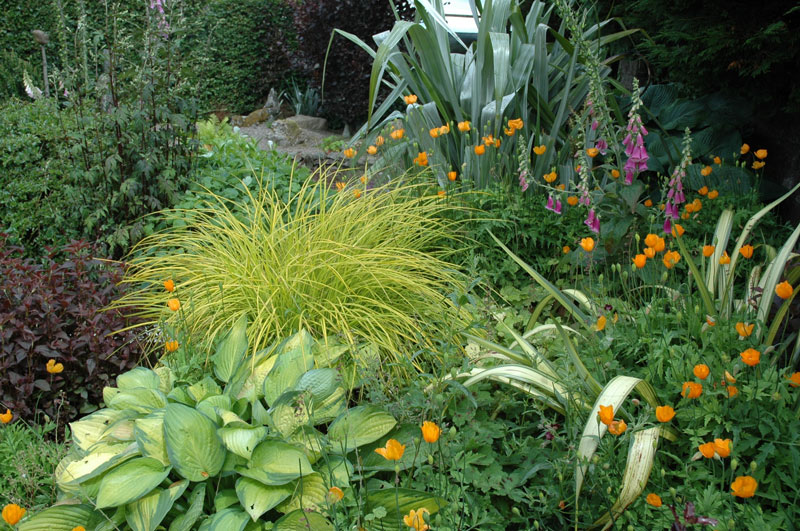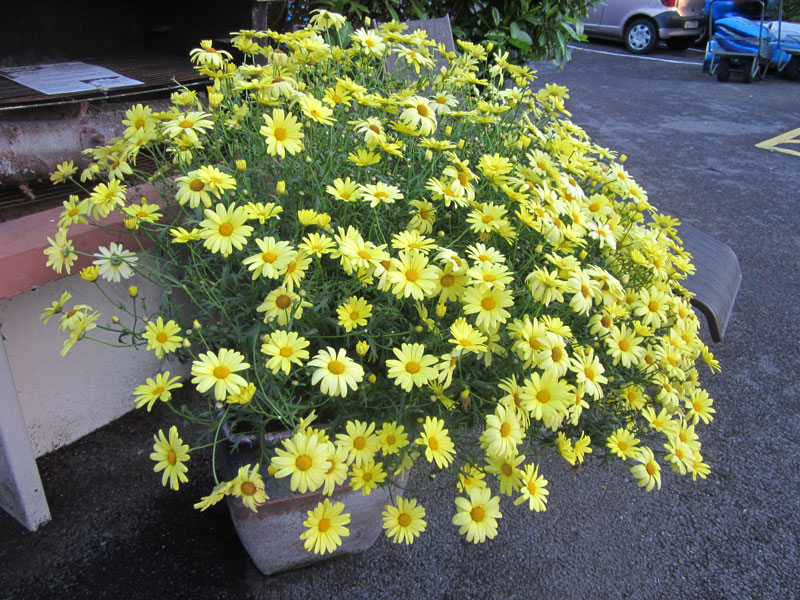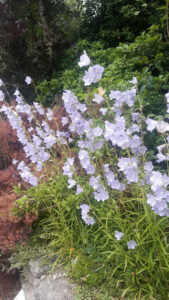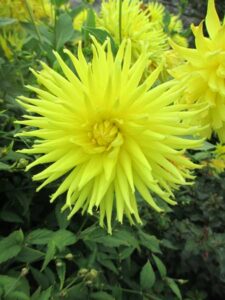Gardening
with Charlie Wilkins
A SNEAKY WEED
I know a weed that lurks in the half-light under shrubs and near to choice perennials, and after it’s deceptively pretty lemon saucers are over, it does something very sneaky! It uses camouflage, slimming itself expertly in appearance so that you find it hard to spot as you ramble. It looks inoffensive, charming even, but miss one seed-head and you can be sure of yet another crop of seedlings sinking their extremely deep taproots into your best perennials and through ornamental grasses! I refer now to the Welsh poppy botanically named Papaver Cambrica (see illustration).
The only workable (and sensible) approach to controlling its spread is to remove the blooms and seed heads as they come into bud or flower. Dead-heading really pays dividends. Chemical control is another option but the aforementioned is safer.
Like its highly sought-after cousins, the Welsh poppy prefers a humus-rich, acid-type soil which is kept moist in summer. On the other hand, it refuses point blank to grow in waterlogged soil or where the drainage is slow and sluggish.
The blooms of all poppies (Papaver family) are ephemeral and unfortunately, so are the plants themselves. Stock has be regularly replenished from seed or seedlings and whilst the Welsh poppy does this without as much as a hint or suggestion, other more desirable forms need coaxing and more than a modicum of knowledge on reproduction using its dust-like seed.
In the back garden of Villa Marie, this sneaky operator alternates between being my joy (when it blooms!) and my greatest torment when I find yet more seedlings among the treasures. It succeeds so well in the fast-draining acid soil that it put in an appearance just about anywhere. When in blooms, it boasts a profusion of bright yellow flowers on thin slender stalks above bright lime-green leaves. Left where it can be grow unmolested, it is a real pleasure, but a deadly charmer.

JAMAICA PRIMROSE
We continue to live in dangerous times. There seems to be no let-up or easing in the misery effecting the entire globe. But no matter where we live, summer brings a freedom from care that is unlike any other time of the year. The season is full of playfulness, wild flowers, light and relaxation. There are dog daisies and red poppies now growing along the wayside and they brighten our environment irrespective of the disappointing weather.
Those daisies are composites, flowers with an amalgamation or blend of smaller flowers which make a larger image. I like daisy-flowered plants in the garden and there are many good forms which bloom without pause until autumn. There are varieties of Anthemis tinctoria in various shades of lemon, but the lemon-yellow form sold as E.C.Buxton is particularly handsome especially when the light falls from directly overhead as it does in July. Compared to some daisies, the flowers of anthemis are small but they are carried in great profusion, and supplemented by magnificent ferny foliage.
If I could grow but one daisy plant, then it would have to be ‘Jamaica Primrose’. I have it this year having lost it for half a decade. It makes a solid, floriferous bush (eventually) of about three feet covered in blooms of clear yellow petals with rich golden centers. Ideal for pots and ornamental containers it will flower to December given a warm sheltered spot. Kept dry over winter, the plant will spring into life the following year. If you add copious amounts of grit to the compost or planting hole then drainage is vastly increased and will ensure that Jamaica Primrose will overwinter safely. Cuttings, which root with vulgarity, may be taken at any time during summer and these can be safely over-wintered (under cover if possible) if you live in a cold area.
If you would like a rooted cutting, get in touch and I will try to get one to you during August or a little later.

GOT A
DIFFICULT SLOPE OR SITE?
Cistus (Rock roses but they are not true roses as we know them) are deal for clothing banks, steep inclines which cannot be grassed, or hungry dry sites. Best purchased in bloom for then their colours will be evident. Be warned however that they resent being transplanted or pruning. Once you decide on a sunny, well-drained position and planting has taken place leave well alone.
Their ’tissue paper’ flowers are charming, especially those which are white with carmine red centres. These may be as large as three inches across and although they last but for a day at a time, the shrub produces them in vast numbers for up to two months in summer.
WE CAN’T GROW EVERYTHING
We cannot grow everything we would like, yet many of us are still willing to try! Most gardens today are small and there’s a natural tendency to want everything that takes one’s eye in garden centres, nurseries and other people’s gardens. It’s easy therefore to divide up a garden into too many compartments, making it seem smaller than it actually is. Easing up on over-heavy planting, and increasing the number of stopping points (places of interest where you can sit and gaze for a while) will give a much better end result. Instead of trying to fit in yet more plants, look for a new timber seat or pair of ornamental chairs that can be moved in and out of the garden as the seasons dictate. You’ll never regret the expenditure.







